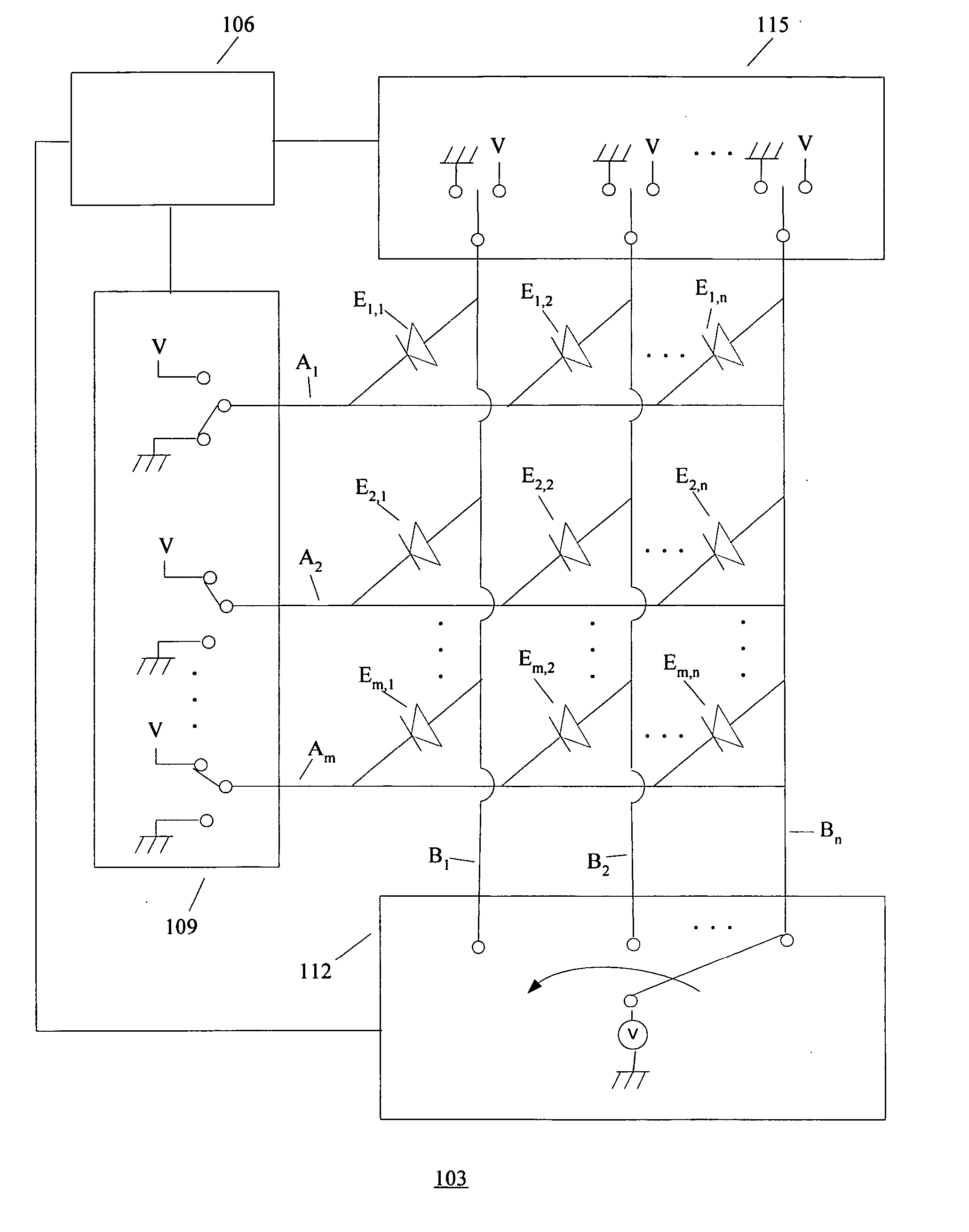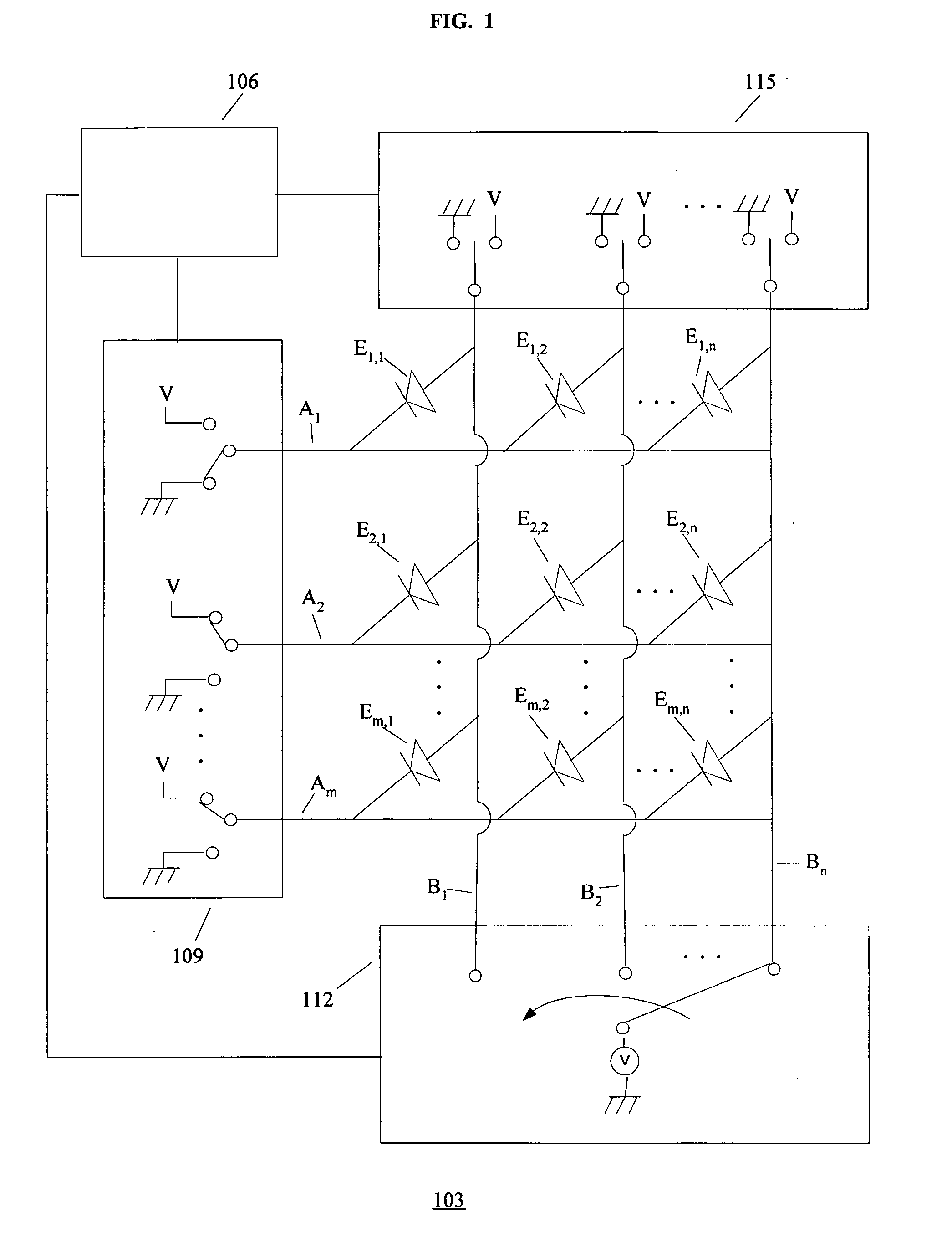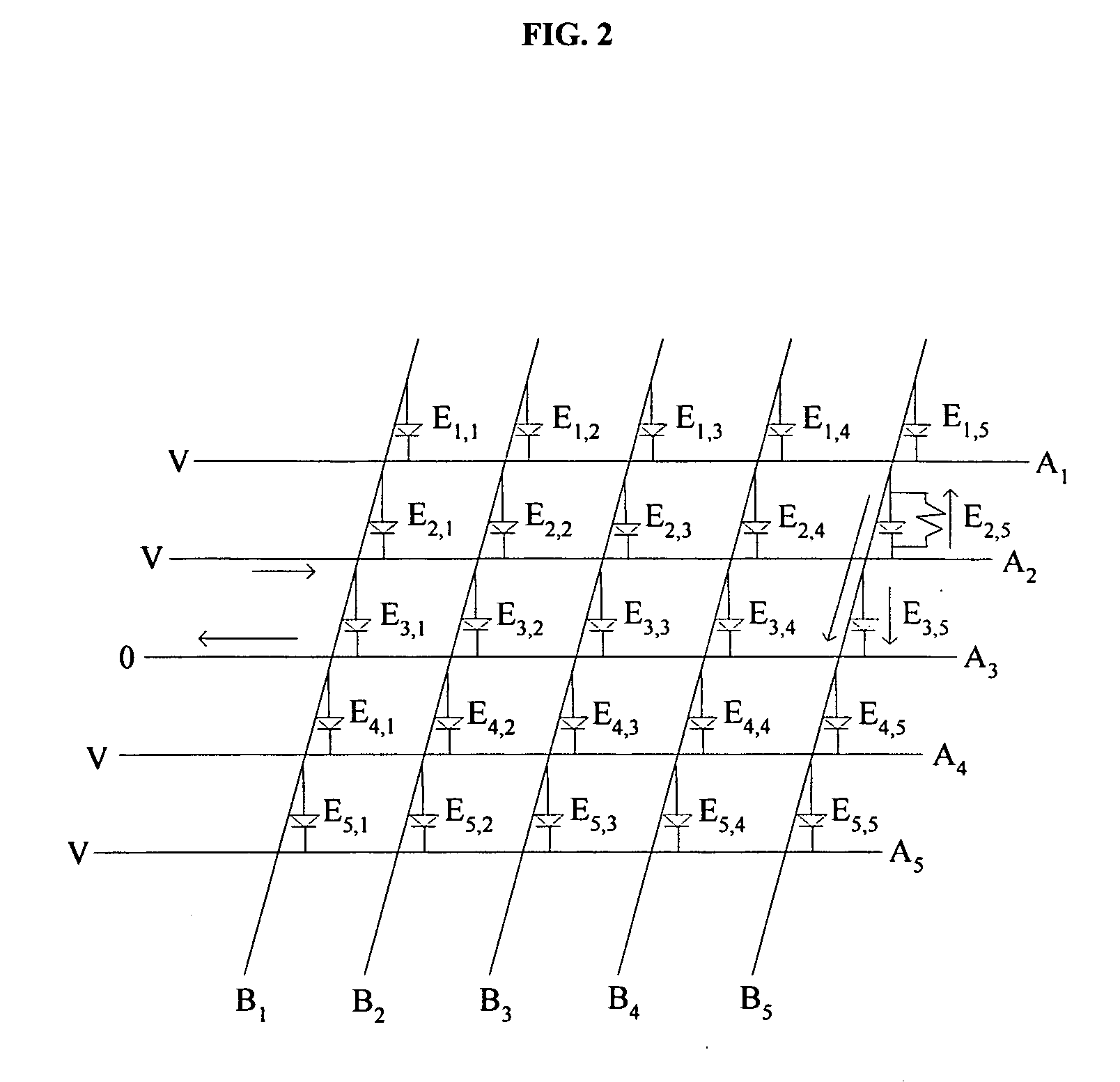Determining leakage in matrix-structured electronic devices
- Summary
- Abstract
- Description
- Claims
- Application Information
AI Technical Summary
Problems solved by technology
Method used
Image
Examples
first embodiment
[0013] this invention pertains to a high throughput screening technique to identify current leakage in matrix-structured electronic devices. Because elements that are likely to develop a short have relatively high leakage current at zero operation hours, by identifying elements with the relatively high leakage current, the electronic devices that are more likely to later develop a short can be differentiated. The electronic devices can be, for example, passive matrix displays (e.g., OLED passive matrix displays where the active layers are comprised of organic polymers or small molecules; or inorganic LED passive matrix displays), light sources used for area illumination, active matrix displays, memory circuits, detector arrays, and solar cell arrays. The electronic device includes multiple elements (e.g., an EL element, a solar cell, or a photodetector cell), multiple first lines (e.g., cathode lines or anode lines), and multiple second lines (e.g., anode strips or cathode lines). T...
third embodiment
[0015] the present invention pertains to using optical detection by employing an array of infrared sensors to identify one or more leaky elements in the electronic device.
[0016] While the matrix-structured electronic device can be, for example, any of the devices described earlier, in order to provide concrete descriptions and examples, the descriptions and examples below refer to a passive matrix OLED display.
[0017]FIG. 1 shows an embodiment of a testing device 103 according to the present invention. The testing device 103 includes a control unit 106, a line drive unit 109, a line drive unit 115, and a voltage measuring device 112 (e.g., this device can include one voltmeter or multiple voltmeters). The control unit 106 is coupled to the line drive unit 109, the line drive unit 115, and the voltage measuring device 112. The line drive unit 109 is coupled to cathode lines A1 to Am (e.g., the cathode lines can be referred to generically as either the first lines or the second lines)...
PUM
 Login to View More
Login to View More Abstract
Description
Claims
Application Information
 Login to View More
Login to View More - R&D
- Intellectual Property
- Life Sciences
- Materials
- Tech Scout
- Unparalleled Data Quality
- Higher Quality Content
- 60% Fewer Hallucinations
Browse by: Latest US Patents, China's latest patents, Technical Efficacy Thesaurus, Application Domain, Technology Topic, Popular Technical Reports.
© 2025 PatSnap. All rights reserved.Legal|Privacy policy|Modern Slavery Act Transparency Statement|Sitemap|About US| Contact US: help@patsnap.com



